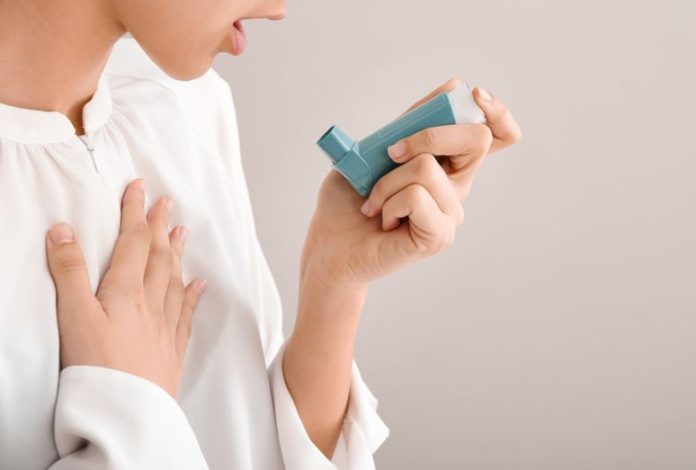Asthma for those affected by this complaint the very word will sometimes bring cold shivers.
For those lucky people who don’t know much about asthma, it is a respiratory disorder characterized by recurring episodes of wheezing, shortness of breath, cough, and thick mucus production caused by inflammation or spasm of the bronchi.
An attack of asthma can be triggered by exposure to an allergen, strenuous exercise, or infection.
In between attacks, the sufferer breathes normally, but treatment should be ongoing to help prevent inflammation, and thus attacks that are in some cases, life-threatening.
This is because during an attack the respiratory mucosa lining the airways swells, the smooth muscle lining the bronchiolar walls contracts, and much thick mucus is secreted into the airways causing the sufferer great difficulty in breathing.
Another problem is the body’s own response to the inflammation of the airways.
The immune system sends out white blood cells containing leukotrienes to deal with it, but these chemical compounds cause further swelling of the mucous membrane, constriction of the smooth muscle, and even more mucous, thus exacerbating the problem.
During an attack the suffer experiences extreme fatigue and anxiety which both make the condition worse.
Treatment consists of the use controlling or preventing the inflammation from occurring in the first place by removal of the offending allergens or cause, but in the case of allergens, it is not always possible to identify the culprit.
Bronchodilators must be used to expand the airways, with constant use of two medications that give both long and short-term relief.
It is also possible to use aromatherapy to aid in both the prevention and treatment of asthma, but the sufferer should never simply go off medication prescribed by the doctor.
To reduce air pollution (bacteria and allergens) place in an atomizer containing an ounce of purified water, 1 drop each of peppermint (Mentha x Piperita) and tea-tree oil (Melaleuca alternifolia), 2 drops of pine oil (Pinus sylvestris), and bergamot (citrus bergamia) and 3 of eucalyptus (Eucalyptus citriodora).
Spray the air frequently or dampen a tissue with it and inhale it.
Another good inhalation that can also be used in the bath or as a chest rub to stimulate the removal of mucous, is a mix of 12 drops of Clary Sage (Salvia sclarea), 2 drops of Ravensara aromatica with 28 drops of Cedarwood, (Juniperus virginiana).
Two oils containing anti-inflammatory and anti-infectious properties are Clove Bud (Eugenia caryophyllus) and Lemongrass (Cymbopogon flexuosus).
They should be mixed together in a 3/1 ratio respectively and inhaled when the presence of cold and flu viruses are suspected.
Another calming inhalation and chest rub can be made by mixing 16 drops Lemon, (Citrus limon), 12 drops Clary Sage, (Salvia sclarea) and12 drops Angelica, (Angelica archangelica).
Massage oil to help to loosen tight back and chest muscles after an attack of asthma can be made from the following ingredients.
Take 2 tablespoons of almond oil and add 3 drops Ylang, Ylang, (Cananga odorata), 3 drops Eucalyptus, (Eucalyptus smithii), 16 drops Lavender, Lavendula Angustifolia and 3 drops Peppermint, (Mentha x Piperita).
Many of these oils can aid in calming the sufferer during an attack, a difficult emotion to achieve while struggling for breath.
However, anxiety makes the body’s oxygen needs escalate, while a person who can remain calm needs much less oxygen and can remain more in control of the situation.

